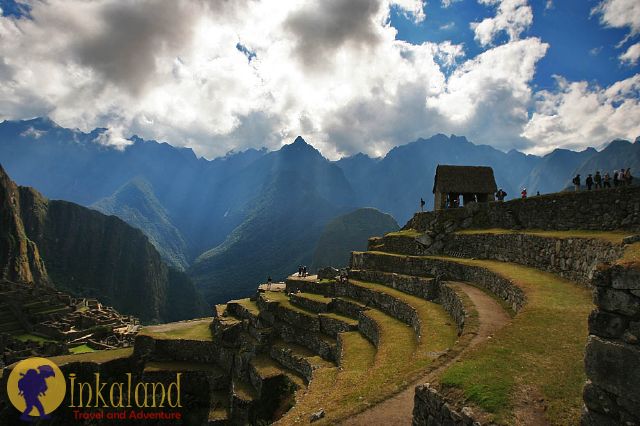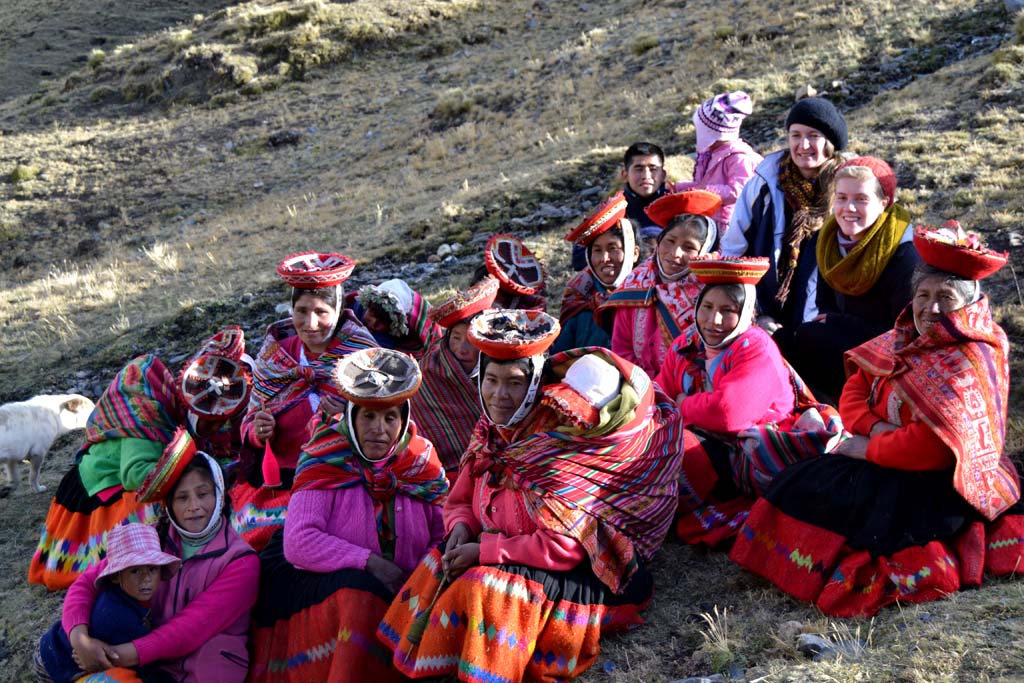Plan your perfect holiday to Peru
Peru has become one of the world’s favourite travel destinations, attracting visitors with its unique blend of Inca heritage, Andean culture, vibrant cities and its pristine areas of Amazon Rainforest. Beyond the world famous sights, there are a myriad of options to choose from when planning a holiday to Peru and so a two or three week journey can be highly tailored to your own interests.
The country is roughly separated into three areas. The most visited is the central high altitude Inca heartland, where we find Machu Picchu and the Sacred Valley and which is flanked on either side by the Amazon and the thin coastal strip in which the capital Lima is located, the natural starting point for most trips. Let’s take a look at each area in more detail to help you plan your perfect Peru itinerary.
The Starting Point – Lima
For most, their first experience of Peru will be at its coastal capital. Lima has earned a reputation as the culinary capital of South America, boasting one of the best collections of restaurants of any major city. It also has a thriving cultural scene, offering many excellent museums and art galleries, as well as access to a lively city beach and some splendid colonial architecture, including impressive cathedrals and churches.
Key Question: Do you want to use Lima as a one night stop-over following your international flight or plan an extra night to enjoy a guided tour of the city?
The Must visit – Inca Heartland
Although Lima is the entry point to the country for most visitors, the main highlight of your Peru holiday is likely to be the central area. This is where you will discover the fascinating Inca heritage and archaeological sites and see for yourself the rich Andean culture, which remains largely unchanged as the years go by. The highlight of the region is, of course, the lost Inca citadel of Machu Picchu, one of the most recognizable and beloved symbols of the ancient world. Naturally, nearly all first-time visitors to Peru will come here, therefore the question isn’t whether you should visit Machu Picchu or not, but how you plan to reach it and how you fit it into the rest of your trip. So let’s look through some options.
The most popular solution is to fly into Cusco from Lima and then transfer by road to the Sacred Valley, a short drive away. This helps you to better acclimatise to the high altitude, as the area sits significantly lower than Cusco, but more importantly allows you to first explore some of the other impressive Inca archaeological sights, such as Pisac at one end of the valley and Ollantaytambo at the other. Other highlights of the Sacred Valley include the pre-Inca Maras Salt Ponds, the traditional Andean village of Willoq and the chance to explore the spectacular scenery on horse-back.
From here, the next point on your journey will be Machu Picchu and you have a couple of different ways to reach the sanctuary. The most common way is to take one of the trains which depart from the Sacred Valley, or you could also choose to return to Cusco to take the luxury Hiram Bingham train, modelled on the Pullman cars of the 1920s, and stay at the Sanctuary Lodge at the ruins. The alternative to the train is to hike to Machu Picchu along either the famous four day Inca Trail, or perhaps follow one of the lesser-known but equally spectacular ancient routes, visiting remote communities on the Weaver’s Trail or admiring the Vilcabamba mountain range on the Salkantay Trail.

Key Question: How to reach Machu Picchu – on foot or by train?
Having explored in-depth the grounds of Machu Picchu, the next port of call will likely be the former Inca capital Cusco. Since those days extra layers of interest have been added to the city, with magnificent Spanish cathedrals built upon the foundations of Inca temples and with Andean ways of life still observed by some. Cusco is surrounded by mountains, giving it a dramatic location and also affording more horse riding opportunities. Within easy reach are Inca ruins, both well-known (such as Sacsayhuaman) and those very much off the beaten track.
After Cusco, many travellers choose to continue their journey south to the sacred Lake Titicaca, which spreads into Bolivia. A visit here affords the chance to observe remote island communities who have maintained their ancient customs and traditional ways of life. The area is also one of the most beautiful parts of the country and is a popular place to exit the country to head into Bolivia.
Key Question: Will you extend your visit to the Inca heartland with a journey south to Lake Titicaca (and perhaps cross into Bolivia) or stick to the Sacred Valley-Machu Picchu-Cusco axis?
The Big Adventure – Amazon Rainforest
There are two ways to explore Peru’s section of the Amazon basin; either via a cruise from the small city of Iquitos or by staying at a specialist lodge further south, in the Tambopata region. Both options offer distinct advantages and the choice between a lodge or cruise is discussed in more length here.
An Amazon cruise gives you the chance to cover more ground and experience the flooded forests, which occur naturally as rain from the Andes makes its way downstream to the Amazon River following the rainy season. This also allows you to get closer to the birds and mammals in the treetops, though spotting them still remains a difficult undertaking.
The Tambopata lodges allow you to explore terra firme in greater detail, focusing on the immediate vicinity of the lodge. These are accessed from nearby Puerto Maldonado and are located in areas of immense natural beauty and biodiversity and so provide an excellent all-round Amazon experience. All are within reach of a macaw and parrot clay lick and panoramic observation towers. They also offer night-time excursions to look for nocturnal creatures, as well as many other activities. Read more about the best places to visit the Amazon.
Key Question: To cruise or not to cruise?
The extension – Coastal deserts
Travelling south from Lima you can visit the beautiful ‘White City’ of Arequipa, one of the most attractive in Peru. It is set in a large valley and has a wonderful colonial centre, earning it UNESCO World Heritage protection. Many buildings are actually constructed with volcanic rock, giving the city its distinctive colour (and nickname) and one of its most famous sights is the Moorish-style 16th century Santa Catalina convent. Arequipa can also be reached on the Andean Explorer, South America’s first luxury sleeper train, which takes you in style from Cusco to the White City, via Lake Titicaca.
It is around 100 miles by road from Arequipa to Chivay, the town which serves visitors to the breathtaking Colca Canyon, one of the deepest in the world. As well as magnificent views, you will also enjoy a close-up encounter with the iconic Andean Condor, as they circle almost within touching distance above your head at the Cruz del Condor lookout point. There are also vestiges of traditional life here, with small communities dotted along the canyon walls.
The other main attraction of this region are the ancient and mysterious Nazca Lines. This collection of vast figures, including a hummingbird, lizard, flamingo and more, are scattered across the coastal deserts here. The best way to appreciate the numerous figures, and perhaps draw your own conclusions on how they came to be and what they signify, is on a panoramic aerial tour in a small plane.
Heading north of Lima brings you to some of the lesser-visited parts of Peru, such as the small beach resort at Mancora, the pre-Inca ruins and mountain landscapes near Huaraz and the world’s largest adobe city (Chan Chan) and traditional fishing villages near Trujillo.
Key Question: Extend your trip with a journey into the Amazon or head south of Lima to Arequipa, the Colca Canyon and perhaps a flight over the Nazca Lines?
Where to Combine with Peru
One of the most popular combinations is with Bolivia, crossing the border at Lake Titicaca, which is shared between the two. However most South American countries are easily combined with Peru, via direct flights into or out of Lima. Argentina, Chile, Ecuador and Brazil are all common additions to a trip to Peru, particularly for those looking to combine some of South America’s most iconic sights such as Christ the Redeemer, Iguazu Falls, the Galapagos Islands and Buenos Aires, along with Machu Picchu. See our Peru itineraries for plenty of ideas and options.
When to Visit Peru
Peru is generally visited all year round, with the Andean region effectively having two seasons; the rainy one and the dry one. The summer months between November and March are generally wetter, whilst the winter, which runs from June to September, is drier. The temperatures tend to remain remarkably consistent throughout the year, often around 20 degrees, but with slightly colder nights in the winter. Machu Picchu is at its busiest around July and August.
Lima rarely receives much rain, instead it is cloaked in cloud for most of the year. The cold Humbolt current running up the Pacific Coast keeps Lima cool, misty and humid, with temperatures between 12 and 18 degrees all year round.
The best time to visit the Amazon depends on multiple factors explained in greater detail in the proceeding link. If you are cosidering a cruise, then the period between April and June, following the wet season, is a great time to see the flooded forests and get closer to the wildlife of the canopies. September to October is conversely a good time to see aquatic animals like caiman and river dolphins, as the water dissipates. The lodges further south are less prone to flooding, though it is perhaps better to visit during the dry season between May and October when paths are clearer and macaws and parrots gather in greater numbers at the clay licks.
How to Get to Peru
The easiest and most common way to reach Peru is by flying direct from London Gatwick to Lima, a flight time of 12.5 hours. Avianca, Iberia, Air France and KLM fly to Lima with a short stop in Bogota, Madrid, Paris and Amsterdam respectively. The other way to arrive into Peru is via another South American country. The easiest border crossing is at Lake Titicaca, where you can explore the Bolivian side before driving to Puno across the border. Most major cities in Latin America connect with Lima on direct flights.
What next?
Travelling in any Latin American country can sometimes be a challenging and unpredictable undertaking for even the most well-versed globetrotters. With our vast experience and expertise, Veloso Tours will carefully create the perfect itinerary for you, handling all the tricky logistics, negotiating the best prices, liaising with local suppliers and ensuring everything flows perfectly during your time here. All you have to do is decide where to go! Our collection of local guides will help bring these wonderful places to life, giving you their inside knowledge and offering an authentic and personal perspective, that will leave you both informed and inspired.
Gain inspiration our selection of Peru holidays or get in touch to discuss the answers to all the key questions above and discuss your own tailor-made Peru itinerary.



Comment (0)